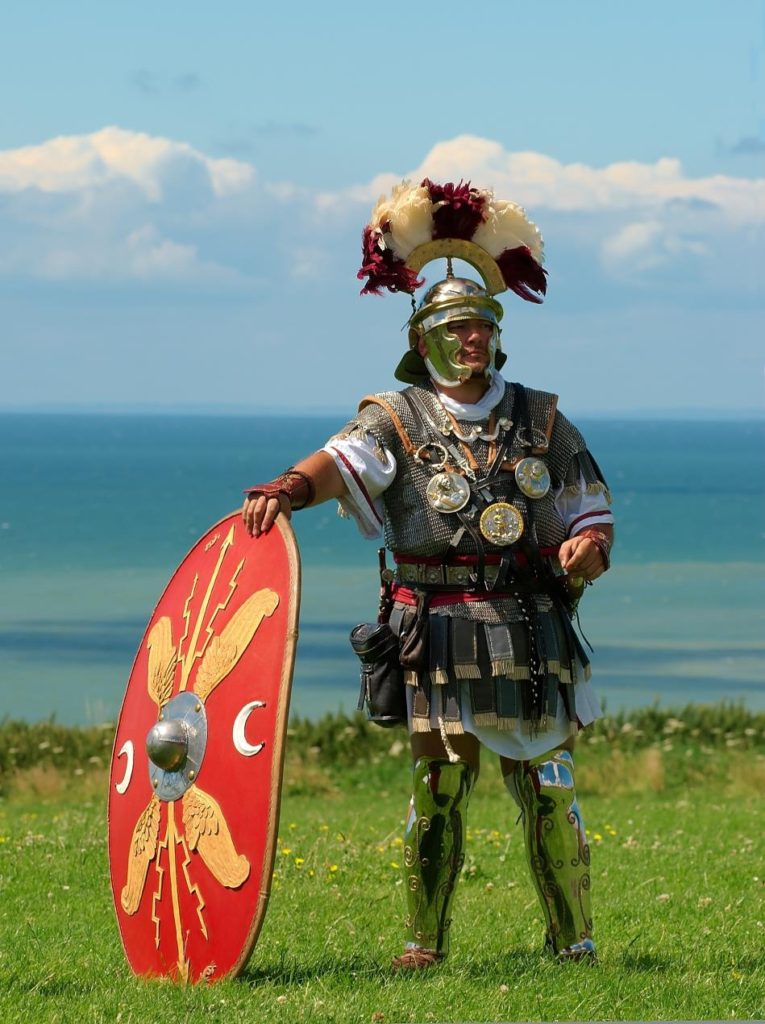10 Roman Roads YOU could be using every day

Millions of drivers across Britain will regularly use roads that are thousands of years old, a list of surviving ancient highways has revealed.
Experts from LeaseCar.uk have revealed ten major Roman routes that are still in operation today, in the form of modern British dual carriageways and major A-roads.
The Romans were well-known for the high quality of their engineering, and their sound approach to navigation lives on across the country.
Tim Alcock of LeaseCar.uk said: “Modern British road users may generally favour the sat nav, or even an A to Z map, but most will regularly rely on Roman road surveying too.
“They were the first people to pave a practical network of highways across Britain, which provided the foundation for our current transport infrastructure.
“In tribute to the first British road engineers, we’ve revealed ten Roman routes that survive in the form of modern highways and are still used by tens of thousands of Brits every day.”
Here is the LeaseCar.uk list of ten significant Roman routes that still survive in Britain:
1. Fosse Way
In Roman times, the Fosse Way linked Exeter (Isca Dumnoniorum) with Lincoln (Lindum Colonia) in one relatively straight, paved line across the heart of Britannia.
Large sections of the ancient route live on in modern highways today, including (from North to South) the A46 from Lincoln as far as Leicester (Ratae Corieltauvorum), the B4455 across Warwickshire, the A429 through Gloucestershire to Cirencester, the A37 in Somerset to Ilchester, the A358 near Axminster in Devon and along minor roads to Exeter.
2. Watling Street
Watling Street followed the path of a trackway used by ancient Britons and was probably one of the first and most important roads built by the Romans in Britain, with estimates for the construction of a paved road dating to 47 or 48 AD.
It headed north west out of the City of London towards northern Wales. Today this same route is followed by the modern A5, though has been extended to the port of Holyhead.
The southern section of Roman Watling Street lives on too and emanates south eastwards out of London to the English channel at Dover as the A2.
3. Akeman Street
This vital road connected the major Roman highways of Watling Street and Fosse Way across central Britannia, between modern St. Albans and the Cotswolds.
Today Akeman Street is mirrored by parts of the A41, between the towns of Berkhamsted and Bicester.
4. Icknield Street
The Icknield (or Ryknild) Street of the Roman era ran from Bourton on the Water in Gloucestershire to Templeborough in South Yorkshire.
A lot of the midlands section of the road survives, notably the A38 from Lichfield past Burton upon Trent to Derby.
5. Pye Road
The capital of Queen Boudicca’s Iceni tribe at Venta Icenorum – Caistor St Edmund, near Norwich – was linked to the Roman capital of Colchester by Pye Road, which was then extended to the new capital of London.
In modern times part of Pye Road’s route is shared by the A140 through Norfolk and Suffolk, the A118 in north eastern London and then parts of Whitechapel Road towards the City.
6. Dere Street
Originally a Roman military road, the route now known as Dere Street ran north from York and beyond Hadrian’s Wall, towards the Antonine Wall in central Scotland.
Sections of the route are still followed in places, such as by the A1 in North Yorkshire and the A68 in Northumberland.
7. Ermin Street
Ermin Street connected Gloucester and Cirencester, known to the Romans as Glevum and Corinium respectively, in the west to Silchester (Calleva) in modern-day Hampshire.
Today, much of this historic road survive in the form of the A417, the A419 and B4000 along the M4 corridor.
8. Ermine Street
Ermine Street with an ‘e’ started in Roman London (Londinium), at Bishopsgate on the city’s outer wall, and headed north to Lincoln and ultimately York (Eboracum).
Significant stretches of the old Ermine Street have evolved into major modern highways, including most of the A10 from London to Hertfordshire, the A1198 from Royston to Godmanchester in Huntingdonshire, and the largely arrow-straight A15 north of Lincoln.
9. Stane Street (South)
Linking London with Chichester (Noviomagus Reginorum), Stane Street was one of the earliest major Roman roads in Britain, with construction completed during the mid-1 st century.
Much of Stane Street has been incorporated into the modern A29 in West Sussex and retains its ancient name.
10. Stane Street (East)
Another Roman Stane Street connected Ermine Street in Hertfordshire to Colchester (Camulodunum) in Essex.




